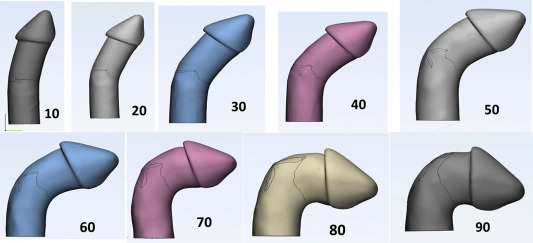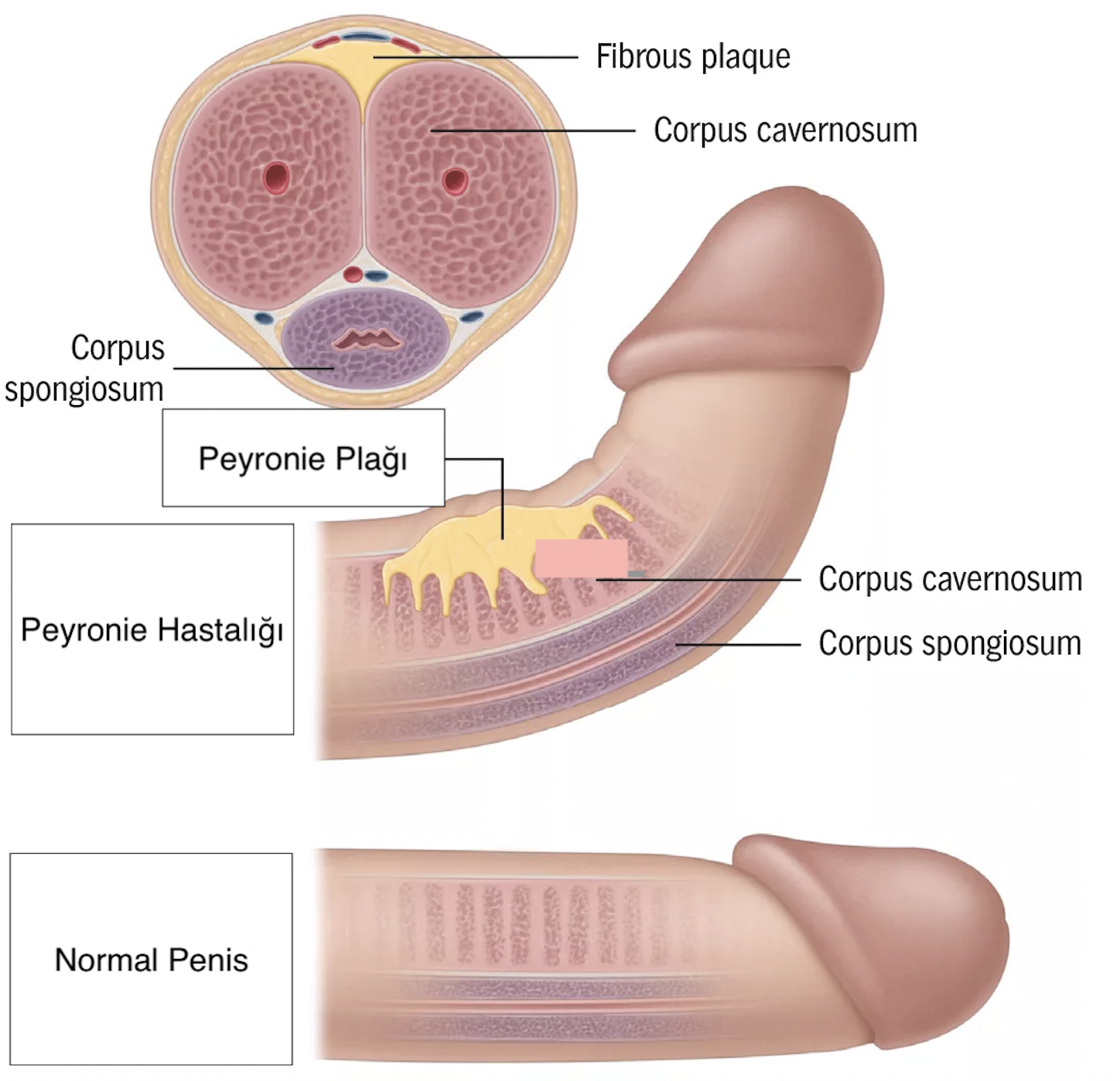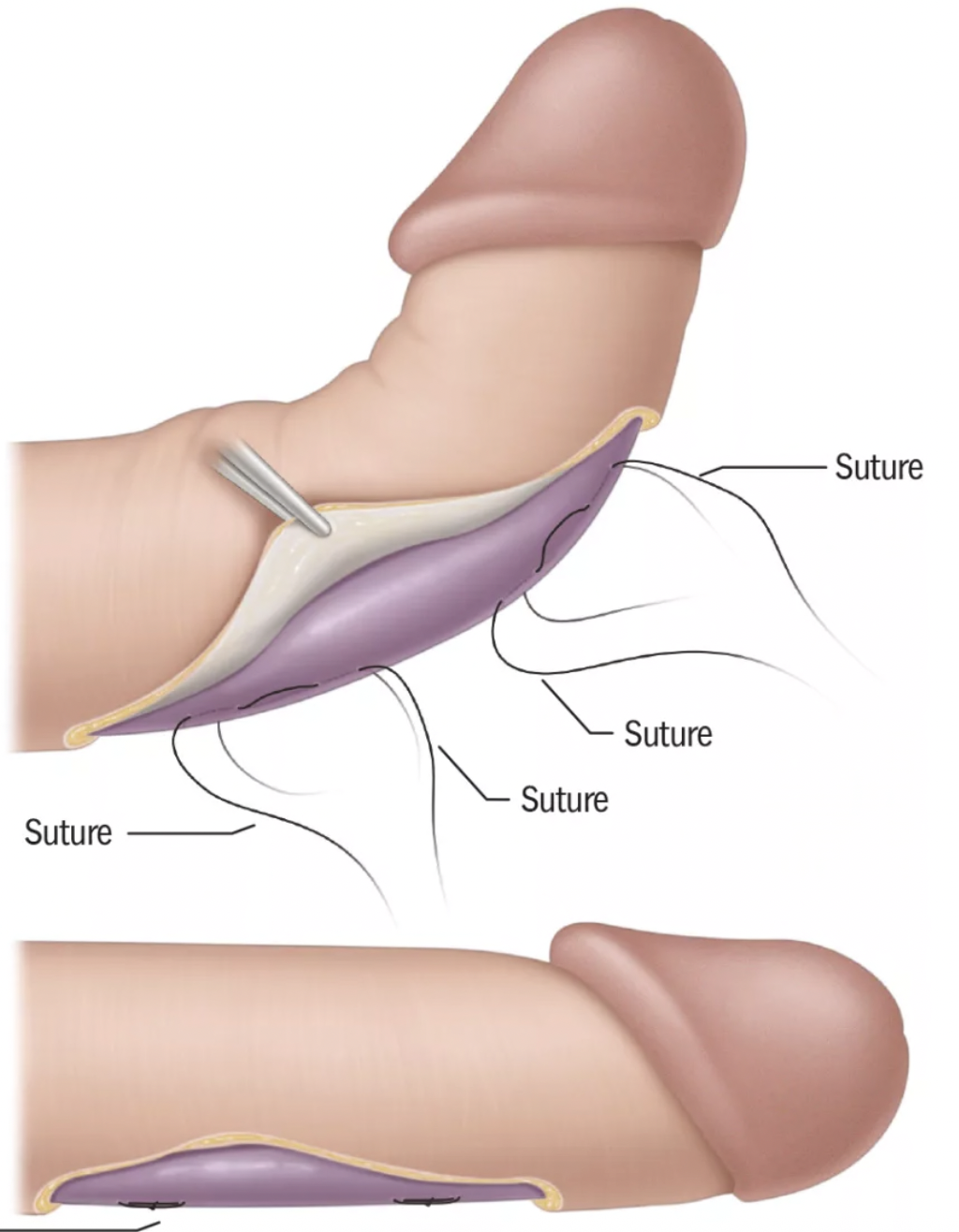Penile Curvature

İçerik
- Penile Curvature
- What is Penile Curvature?
- Penis Curvature Degrees
- Types of Penile Curvature:
- Is there a treatment for Peyronie's disease?
- Do men with Peyronie's disease have an increased risk of developing other conditions?
- Causes of Penile Curvature:
- Penile Curvature Treatment Options:
- Post-Surgery Recovery Process and Expected Outcomes:
- Frequently Asked Questions About Penile Curvature
What is Penile Curvature?
Penile curvature is an abnormal bending of the penis, which can cause pain or difficulty during sexual intercourse. It may be present from birth or develop later in life. Treatment varies depending on the severity of the curvature and the symptoms.
The term "curvature" refers to the bending of any part of the body. Penile curvature refers to the noticeable bending of the penis when it becomes erect. Some men are born with it (congenital penile curvature), while others develop it later in life due to Peyronie's disease, which involves the formation of scar tissue (hardened scar tissue) inside the penis. A mild curvature is completely normal, but if the curvature is significant, it can cause discomfort, pain, and sexual dysfunction.
Penis Curvature Degrees

Don't delay, let's meet now !
- Feneryolu Bagdat Avenue No 85/1 Postal Code: 34724 Kadıköy/İstanbul - Turkey
Types of Penile Curvature:
There are two types of penile curvature:
1 If you have congenital penile curvature:
If you have congenital penile curvature, this means that your penis is naturally bent upward, downward, to the left, or to the right. This occurs because one side of the penis develops slightly differently than the other. The curvature is usually noticeable when the penis is erect. Although it is present from birth, most people do not notice it until puberty. In most cases, it does not cause pain or problems; however, if the curvature is severe, it can make sexual intercourse difficult or uncomfortable.
2 If penile curvature developed later in life (Peyronie's disease):
If penile curvature develops later in life, it is often caused by Peyronie's disease. This condition occurs when scar tissue forms inside the penis, causing it to bend when erect. The curvature may gradually worsen over time; in some cases, it can cause pain or make sexual intercourse difficult. You may notice a hardness or lump that can be felt under the skin of the penis.
Is there a treatment for Peyronie's disease?
Unfortunately, there is no definitive cure for Peyronie's disease, but there are treatment options that may help. The success of treatment depends on how severe the curvature is, your age, and how well you respond to treatment. In some cases (about 5%), Peyronie's disease may resolve on its own without treatment.
Do men with Peyronie's disease have an increased risk of developing other conditions?
In some men with Peyronie's disease (approximately 13 out of 100), hard tissue (plaques) also forms in other areas of the body; this condition is known as Dupuytren's contracture. These hard tissues are most commonly found in the hands and feet. Dupuytren's contracture occurs when the tissue beneath the skin of the hands and feet thickens and causes the structures to bend inward.

Causes of Penile Curvature:
The exact cause of penile curvature is not always clear. If the curvature develops rapidly, it is often due to an injury. For example, a sports accident, very rough sexual intercourse, or surgery on the penis or prostate can cause this.
Sometimes penile curvature may be associated with the following health issues:
- Diabetes
- High blood pressure
- High cholesterol
- Lifestyle habits such as smoking or excessive alcohol consumption
- Erectile dysfunction (erectile dysfunction) — this can also make the penis more prone to bending
- Narrowing of the blood vessels that carry blood to the heart
- Dupuytren's contracture — a condition that causes one or more fingers to bend and remain bent
Penile Curvature Treatment Options:
If you have been diagnosed with penile curvature, there are different treatment options available depending on your symptoms, the severity of the curvature, and how much it affects your life.
The treatment for congenital penile curvature is the same as that for penile curvature caused by Peyronie's disease. There is no specific angle of curvature that requires treatment. If the curvature causes pain, makes sexual intercourse difficult, or if you wish to change the appearance of your penis for personal reasons, you may seek treatment. Every individual's needs are different; therefore, treatment is typically determined based on what is most important to you.
Treatment options include:
- Watchful waiting
- Medications
- Non-medication treatments
Extracorporeal shock wave therapy (ESWT)
Traction and vacuum devices
- Surgery
It is important to check whether the disease is still active, as this affects the type of treatment and timing of surgery. Surgery is usually performed after penile curvature has stabilized, i.e., pain should have subsided and there should be no worsening of curvature for at least 3 months.
-
Watchful Waiting for Penile Curvature
If your symptoms are mild and not getting worse, your doctor may recommend watchful waiting. This means observing the condition over time and monitoring any changes before starting active treatment.
What is watchful waiting?
Watchful waiting, or the "wait and see" approach, means monitoring the condition without starting treatment immediately.
Watchful waiting may be recommended in the following situations:
- If the curvature of the penis is mild and not getting worse over time
- There is no pain in the penis during sexual intercourse
- If the pain is mild when erect
- If the penis can become erect (erectile function is good)
- If the hard plaque (scar tissue) inside the penis is still changing shape
In this case, you should see your doctor regularly or contact them if you notice any changes. If your symptoms are severe or worsen over time, your doctor may recommend medication or surgery.
-
Medication for Penile Curvature
Some medications, especially in the early stages of the condition, may help reduce pain or slow the progression of penile curvature. Your doctor will determine whether this option is appropriate for you.
Medications are generally used when the curvature is still in its early stages, if you are not a candidate for surgery, or if you do not wish to undergo surgery. The purpose of medication is to stop the formation of hard tissue (plaque), reduce pain, and help reduce penile curvature. Medications can be taken orally, injected into the penis, or applied to the skin (topical treatments).
Topical Medications
Topical treatments involve applying creams or gels directly to the penis. One popular option is Verapamil cream, which may help reduce pain and soften the hard tissue (plaque).
-
Non-Medication Treatments for Penile Curvature
Extracorporeal shock wave therapy (ESWT)
Extracorporeal Shock Wave Therapy (ESWT) uses sound waves to break up hard tissue (plaque) inside the penis and help increase blood flow within the penis. This treatment can stop pain, correct curvature, and promote healing. It is a non-surgical (non-invasive) treatment method, typically used in the early stages of Peyronie's disease. Although it may seem like a simple procedure, it is essential to consult your doctor to determine if it is suitable for you.
Traction and Vacuum Devices
Traction and vacuum devices are tools that may help the penis straighten over time.
Traction devices work by gently stretching the penis over time to help straighten it. The device applies a slow and steady pulling force to the penis, which over time can help it become longer and straighter. This method may also help make the tissue more flexible.
A vacuum pump helps straighten the penis by gently pulling it. The device creates a vacuum in the area, increasing blood flow and helping the tissue to stretch. Over time, the curvature may decrease and the tissue may become more flexible.
Both of these methods are non-surgical (non-invasive) and require regular use over several months to be effective. It is important to consult your doctor to determine which device is appropriate for you.
-
Surgical Treatment for Penile Curvature
If the curvature causes pain, difficulty during sexual intercourse, or if other treatments have not worked, surgery may be recommended.
Surgery is typically performed when there are significant abnormalities in the penis that cause pain or make sexual intercourse difficult, or when other treatments such as medications, traction devices, or vacuum pumps have not been effective.
Surgery for penile curvature can be postponed until your penile curvature stops progressing and you have had at least 3 months of pain-free periods.
There are several different surgical options available to correct penile curvature:
Nesbit procedure:
The Nesbit procedure is a common surgery used to correct curvature caused by conditions such as Peyronie's disease. The surgeon removes the scar tissue causing the curvature and uses tissue from the other side of the penis to correct the curvature.
This surgical procedure can straighten the penis; however, it typically results in a shortening of approximately 1–1.5 cm. This method is most effective for men with mild to moderate curvature, no severe erectile dysfunction, and adequate penis length.
Plikation procedure:
The Plication procedure is similar to the Nesbit procedure but is slightly simpler to perform. The surgeon straightens the penis by placing stitches on the opposite side of the curvature. These stitches are non-absorbable, meaning they are permanent. The results are similar to those of the Nesbit procedure, and the penis becomes straight. This method may also cause a slight shortening of the penis; however, it is less complicated.
Plate excision and grafting:
During this surgery, the scar tissue (plaque) causing the curvature is cut away and tension is reduced; in some cases, this tissue is completely removed. A graft is placed in the empty area. A graft is a piece of tissue taken from your body and helps the penis heal properly and remain straight.
This surgery is typically performed in cases of severe penile curvature.
Penile Prosthesis:
Placing a penile implant inside the penis can help correct curvature and improve erections. It is usually considered when other treatments have not worked and is a surgical procedure. These devices can be inflatable or flexible.

Post-Surgery Recovery Process and Expected Outcomes:
Following penile curvature surgery, patients are typically admitted to the hospital on the day of the procedure and discharged the following day after wound dressings are checked.
During the first week after surgery, pain, swelling, and bruising in the penis are common. Therefore, it is important to use appropriate antibiotics and pain relievers during the first week. Sexual activity is generally permitted 4–6 weeks after surgery. Following penile curvature surgery, most patients achieve a straight and functional penis as the stitches heal and swelling in the penis subsides. Post-surgery satisfaction rates are very high.
Penile curvature surgery can help straighten the penis; however, like any surgery, it may have some side effects. These may include:
Side effects of surgery
- Pain or swelling after surgery
- Risk of infection at the surgical site
- Scar formation; this may alter the appearance or function of the penis
- Some men may experience changes in sensation after surgery
- Achieving or maintaining an erection may become more difficult (this does not occur in every patient)
- The penis may be slightly shorter after surgery
It is important to discuss these side effects in detail with your doctor before making a decision about surgery.
Living with Penile Curvature
Penile curvature can affect both your physical and emotional well-being. Living with penile curvature can affect not only your physical health, but also your self-confidence, relationships, and emotional well-being. It is important to know that many men experience this condition and that you are not alone. In some people, mild curvature causes little to no issues in daily life. However, others may notice changes in sexual function or self-confidence. Whether your symptoms are physical or emotional, help and support are available.
